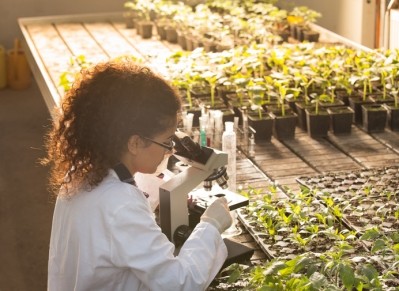TechAccel looks to biotech start-up for novel plant trait transformation

The company has announced funding of a Plastomics Inc project.
The initial investment looks to support the work the biotechnology startup is doing, said Brad Fabbri, chief science officer with TechAccel. Plastomics is focused on the use of chloroplast transformation in feed crops.
“No one has been able to make it work in corn,” he told FeedNavigator of the transformation process being used. “But the whole field has improved and we know a lot more.”
The goal of the initial test product is to demonstrate the effectiveness of the process in a simple system, before starting work on a more complicated plant like corn, he said.
TechAccel was founded on the idea that there could be a gap between agricultural-related technologies being tested at the university level and those that developed in the commercial sector, he said. The company invests in some of those technologies or the work that start-up firms are doing.
In some ways it acts similarly to a venture capital firm, however, it also makes side investments in companies of interest to expand the research or technology being used, said Fabbri.
“Like a venture firm, we make an investment, [but] what is different is when we make an investment we make one or more side investments for science advancement,” he said. “We find another way that the team and their technology platform could be deployed on something they’re not actually working on with the idea that if successful it could open up a new commercial market.”
Chloroplast transformation and feed crop traits
The chloroplast transformation or engineering process works by adding traits of interest to a plant and altering the DNA found, not in the nucleus of the plant’s cells, but in the chloroplast, said Fabbri. However, the process is still in experimental stages.
There could be several advantages to adding traits to the chloroplast, he said. The process could potentially make a plant more effective in displaying a trait and it might reduce the time and cost involved in stacking several traits in a corn or soybean variety.
“If you could hypothetically put some of [the traits] into the chloroplast and make it so you don’t have as many moving things to manage, you’d reduce the time and cost,” he said. “This is the theory, but it’s never been really tried in corn.”
One concern raised regarding plants with biotech traits is that those traits are reproduced in the pollen of the plant, and could potentially spread, he said. “Chloroplasts are not in the pollen, so if you put your transgenes in the chloroplast they would never be transmitted by pollen,” he added.
If the process can be made to work effectively, it could let plant breeders spread traits of interest between the chloroplast and genome, so more traits could be stacked more efficiently, said Fabbri. “It’s really important to serve the needs of farmers, and it gets into this, ‘Can we produce more food sustainably, year-after-year, without blowing out your fields, in an environmentally-friendly fashion to support the increasing population without increasing farmland?’”
Additionally, if the process can be made to work in corn, and potentially in soybeans, it could help make production of feed crops easier and improve yields, he said. “If you’re now growing forage corn for dairy, or grain corn and soy for dairy, or beef, or swine and chickens it gets to, ‘I can produce more,’” he added.
“You’re looking at yield – you reduce the cost of feed,” he said.
There also has been some interest in exploring the addition of quality traits, he added.
“Potentially, you could have higher oil corn, or higher protein or improved protein corn, or high lysine corn if you’re feeding poultry or swine,” he said. “There are a bunch of other things that you could potentially do.”
Investments and early experiments
The initial investment and research project with Plastomics is set to explore the use of chloroplast engineering to introduce an insect-resistance trait into tobacco, said Fabbri. However, that effort is only one step in the larger project, which would seek to introduce the trait into a feed crop like corn.
“We’re interested in them because it’s a good investment and we’re doing a proof of concept,” he said of the initial project. “But it’s easy to do testing a concept or a transformation in tobacco – in corn it would be really valuable.”
Initial experiments using chloroplast transformation and the insect control trait are expected to take several months, he said. “For the initial proof of concept in the model plant, we hope to have an answer in 3 or 4 months – this is not a product, it is an experiment,” he added.















